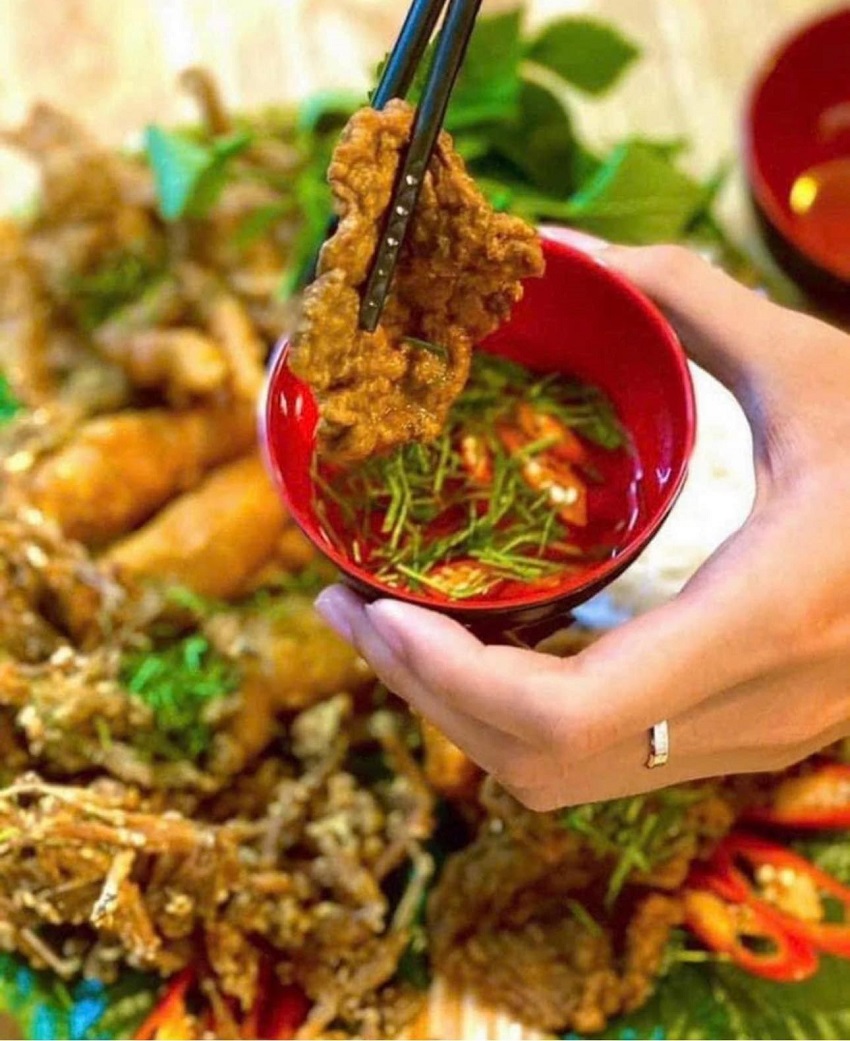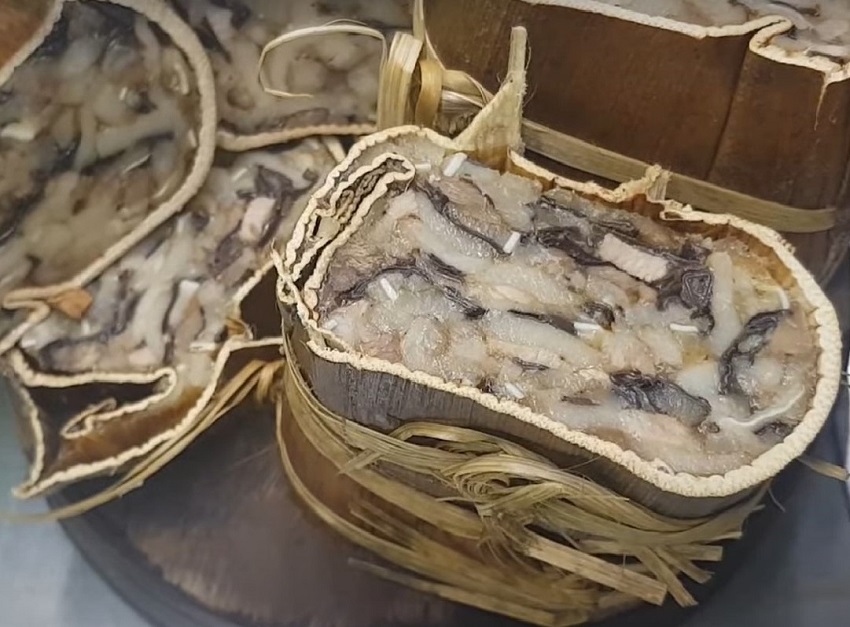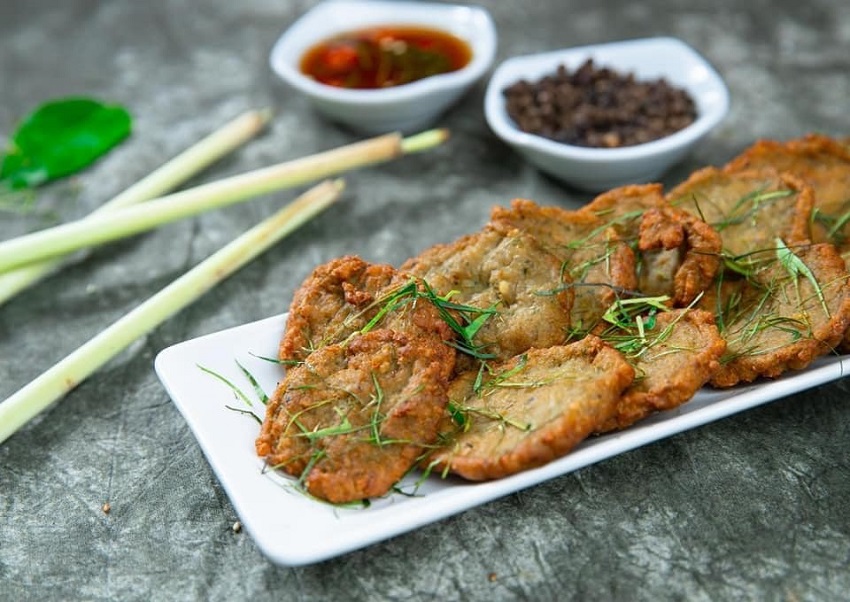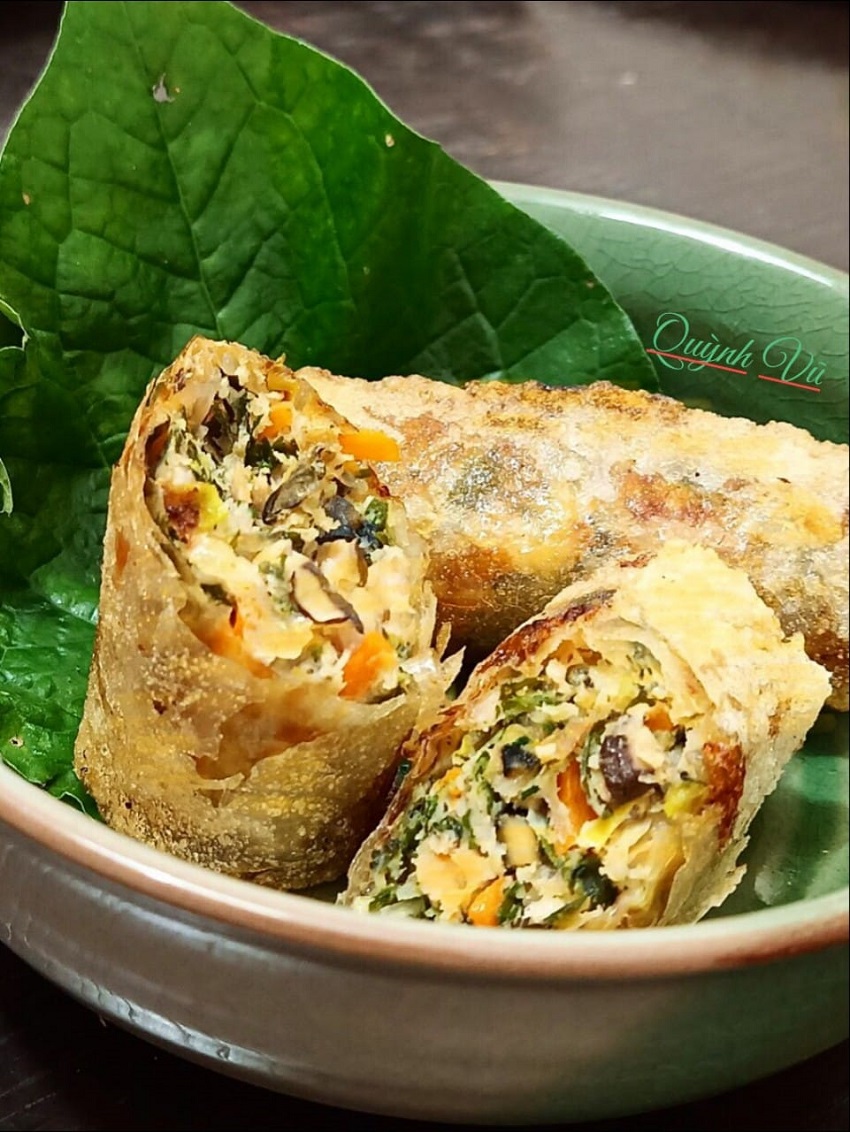Unique delicacies from Hanoi’s countryside
Experienced local chefs can create some delicious and distinctive dishes from the unusual food resources found in the outskirts of Hanoi.
When it comes to Hanoi's cuisine, there are several dozen dishes to choose from, some of which are well-known across the nation and even beyond the Vietnamese border.
The delicacies are said to exemplify the refined palate of the Trang An people, or ancient Hanoians.
| The dish of Cha Nhai Khuong Thuong. Photo: Vu Vu |
Gio Goi Mo Cau or pork bologna wrapped in areca spathe
A well-known specialty is Uoc Le pork bologna from Hanoi's suburban Thanh Oai district, especially the grilled cinnamon bologna with its golden color and delicious aroma. Besides, head cheese, pork skin sausage, or fat bologna are not uncommon. However, it's rare to find a piece of Gio Goi Mo Cau, or Gio Mo Cau for short.
Pork bologna, or gio in Vietnamese, wrapped in dried areca spathe, or mo cau, is a traditional dish made by people in suburban areas on special occasions. It is associated with Nhoi Village in Dong Anh District, where a number of households still make the dish for downtown stalls. However, production is limited by the availability of leaves.
As an areca tree can take several months to shed a leaf, locals have to collect them one by one. Before being used for wrapping, the dried leaves must be washed and then soaked in water until they are soft. Some people even blanch the leaves and let them drain.
The selected meat is mostly lean pork leg, chopped into medium-sized pieces and mixed with a little pork cheek, ear, nose and tongue to make it crispy and sticky.
Pork Bologna Wrapped In Areca Leaf is a unique yet tasty Hanoian delicacy. Picture: Vy Le |
It is then marinated, seasoned with ground pepper or peppercorns, and stir-fried. The meat should be cooked just right, not overcooked so that the color of the meat remains pink.
Finally, the meat is placed inside the finished areca leaf, rolled tightly into a cylindrical shape, tied firmly with bamboo strings, and hung to drain all the fat. After one or two days, it is ready to be sliced for consumption.
At first glance, Gio Mo Cau may not look much different from other types of Vietnamese pork bologna, but it's drier and less fatty, making it easier to digest and less cloying. The casing is cut along with the contents before being peeled off, leaving a thin white film of areca leaf on the bologna, which gives it a very pleasant aroma.
As tasty as Gio Mo Cau is, it is a pity that it is such a rare delicacy, as current urbanization has reduced the number of areca trees even on the outskirts of Hanoi. But anyone who has ever had a bite will surely never forget it.
Cha Nhai Khuong Thuong or Frog Cake from Khuong Thuong Village
| The special dish of Cha Nhai can be found today in Hanoi's Khuong Thuong Ward, Dong Da District. Photo: Vy Le |
The hamlet of Khuong Thuong used to be a low-lying area, mostly used for rice cultivation, so animals such as snails and frogs were abundant. This natural endowment gave rise to the locals' famed snail rice vermicelli, an exceptional meal even for Hanoians: Cha Nhai.
Normally, the largest frogs are saved for frying in flour, while medium-size frogs are used for cakes - with the skin peeled off and all the organs removed. Both the meat and the bones are minced and pounded in a mortar to break up any lumps. Then it is mixed with minced belly, raw pork paste, pepper, chili, spices and chopped herbs.
The mixture is then skillfully kneaded into round, palm-sized pieces and fried in a pan of hot oil. The pieces should be yellow and crispy on both sides, but still moist inside to preserve the aroma and rich sweetness of the frog meat.
Today, if you want to eat cha nhai, you can still come to Khuong Thuong Ward in Dong Da District. The rice fields around Hanoi are shrinking, so frogs are harder to find. However, the cake is still a unique dish worth trying in the capital.
Nem Oc Phap Van or Snail Spring Rolls from Phap Van Village
| Hanoi's specialty of nem oc or snail spring rolls.Photo: Quynh Vu |
Nem Oc may fare better than Gio Goi Mo Cau and Cha Nhai because its main ingredient, snails, is readily available. Google may direct those searching for nem oc to downtown's Phu Dong Thien Vuong Street, but few know that the origins of these unusual spring rolls can be found in Phap Van Village in Thanh Tri District, a remote hamlet whose main crop is wet rice.
After being cleaned, the snails are boiled with lime and lemongrass leaves. When the water boils and the snails have just opened their opercula, they must be taken out quickly to preserve their sweetness.
They are then squeezed with salt, lime juice, or vinegar to clean and crisp them up, then sliced. The meat is mixed with minced pork, raw pork paste, betel leaves, vermicelli, wood ear, and scallions, and wrapped in rice paper.
The spring rolls should be about the size of a thumb and fried over high heat so that they are quickly cooked and crisp. Nem Oc can be served hot with rice vermicelli and some fresh herbs and dipped in sweet and sour fish sauce, mayonnaise, or chili sauce.
In the context of international integration and multiculturalism, despite the fact that exotic foods from around the world have encroached on the popularity of traditional dishes, Hanoi delicacies like Gio Goi Mo Cau, Cha Nhai Khuong Thuong or Nem Oc Phap Van are still irreplaceable attractions on the capital's culinary map.















